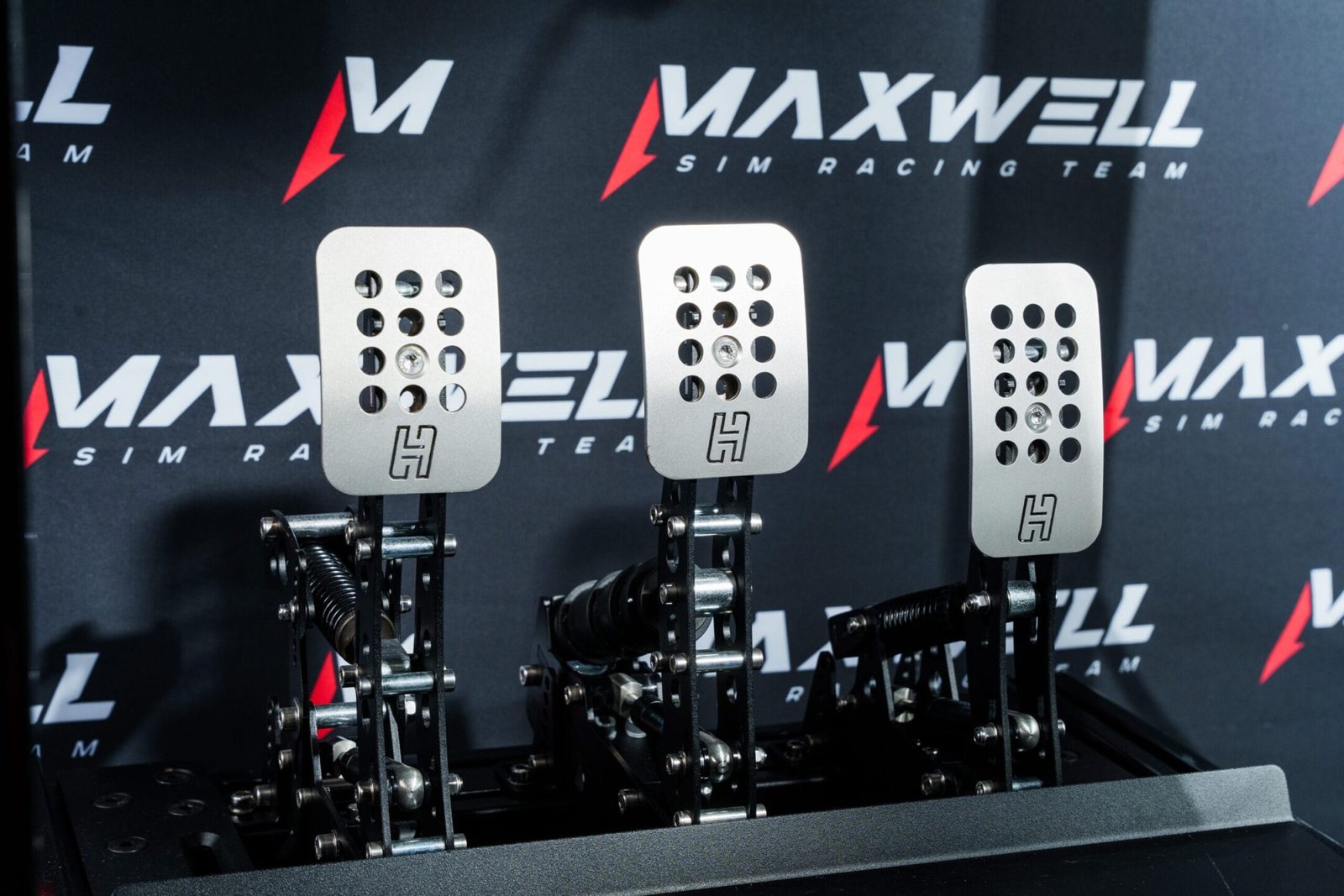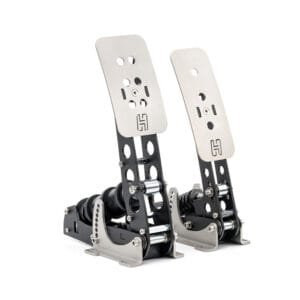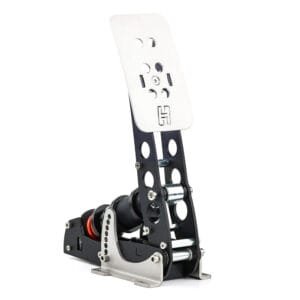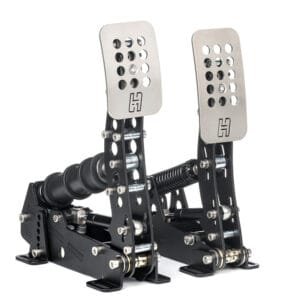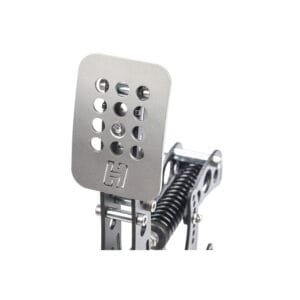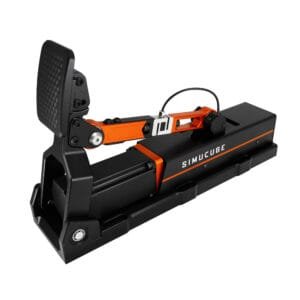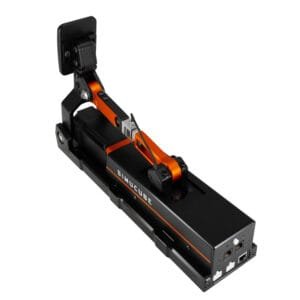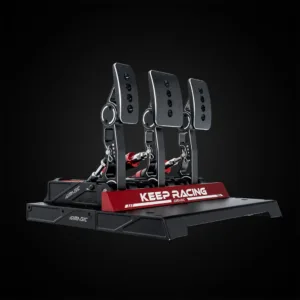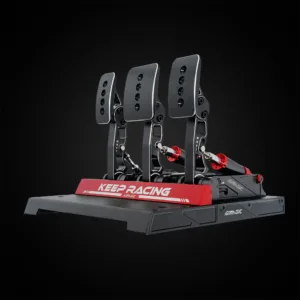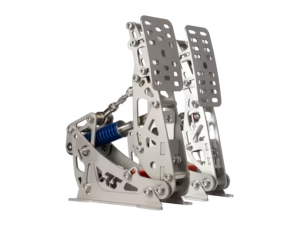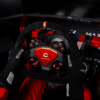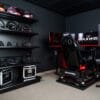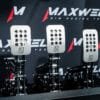When it comes to sim racing, many focus on choosing the best steering wheel, but they often overlook the importance of high-quality pedals. However, braking is one of the most crucial skills in racing, and the right pedals can dramatically improve your lap consistency and control over the car.
There are two main types of pedals in sim racing:
- Mechanical pedals – a budget-friendly option that uses potentiometers or Hall-effect sensors to measure pedal travel.
- Load Cell pedals – advanced pedals that measure applied braking force, offering significantly better precision and realism.
This guide will break down the key differences, helping you choose the best pedals for your needs and budget.
1. How Do Mechanical Pedals Work?
How They Function
Mechanical pedals use either potentiometers (analog sensors) or Hall-effect sensors (magnetic field-based sensors) to track pedal movement. When you press the brake pedal, the system measures how far it moves and converts that into braking force in the game.
Advantages of Mechanical Pedals
- Affordable – They are significantly cheaper than Load Cell pedals.
- Easy to Set Up – Just plug and play, with minimal calibration required.
- Compatible with Most Racing Wheels – They work with a wide range of setups.
Disadvantages of Mechanical Pedals
- Less Precision in Braking – They measure pedal travel, not applied force, making braking less consistent.
- Wear and Tear – Potentiometers degrade over time, losing accuracy.
- Lack of Realism – Unlike real cars, which use hydraulic or pressure-based braking, mechanical pedals work based on movement rather than force.
Who Should Use Mechanical Pedals?
- Beginners looking for an affordable entry into sim racing.
- Casual racers who don’t need high-end precision braking.
- Those who play arcade-style or semi-simulation racing games.
Recommended Model: Thrustmaster T3PM – A solid, budget-friendly choice with magnetic sensors for added durability.
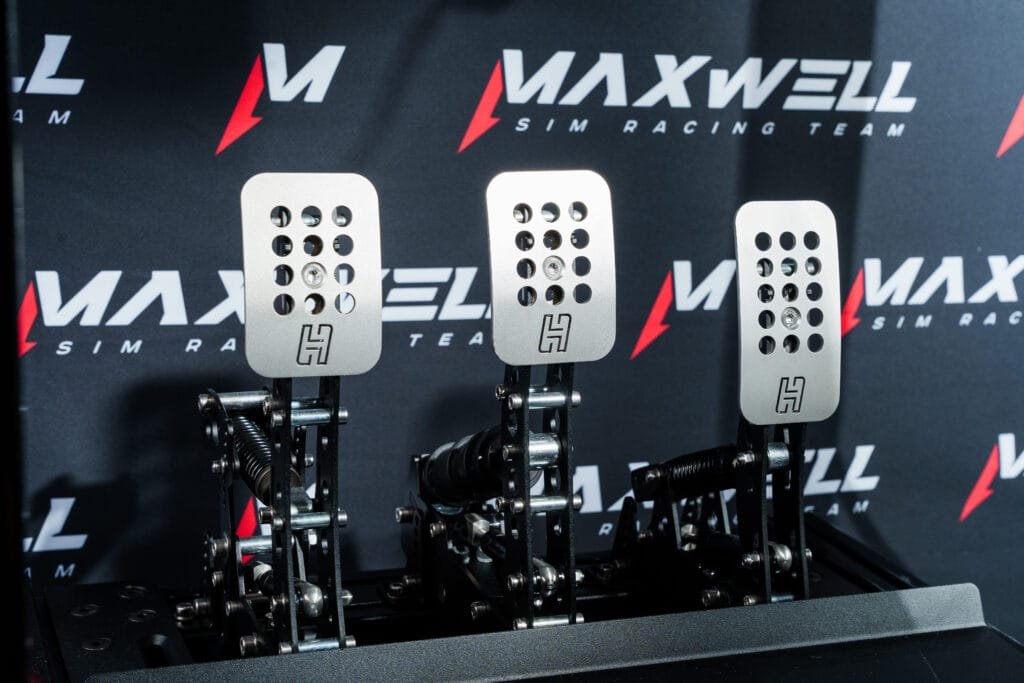
2. Load Cell Pedals: The Choice of Professional Racers
How They Function
Instead of measuring movement, Load Cell pedals measure pressure. The more force you apply to the pedal, the stronger the braking effect—just like in a real race car. This allows for extremely precise braking control, helping you perfect trail braking techniques and threshold braking in high-speed racing.
Advantages of Load Cell Pedals
- Realistic Feel – They simulate real-world braking systems.
- Consistent Performance – Muscle memory allows for precise braking points, improving lap times.
- Durability – Load Cell sensors don’t degrade like potentiometers.
Disadvantages of Load Cell Pedals
- Higher Cost – They are significantly more expensive than mechanical pedals.
- Steep Learning Curve – If you’re used to mechanical pedals, adjusting to Load Cell pedals takes time.
Who Should Use Load Cell Pedals?
- Experienced racers who need ultra-precise braking.
- Sim racers competing in online leagues or professional esports.
- Drivers looking to transfer their skills from sim racing to real-world motorsports.
Recommended Model: Heusinkveld Ultimate+ – A professional-grade pedal set with adjustable resistance for an ultra-realistic feel.
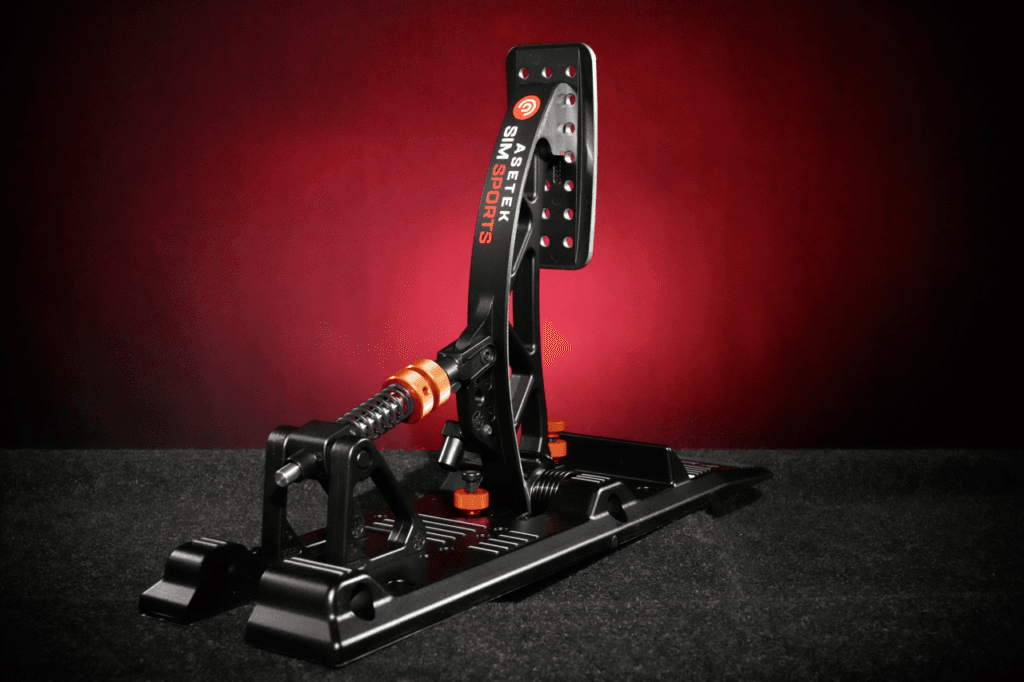
3. Mechanical vs. Load Cell: Side-by-Side Comparison
Feature | Mechanical Pedals | Load Cell Pedals |
Technology | Measures pedal travel | Measures applied force |
Braking Precision | Moderate | Extremely precise |
Longevity | Potentiometers wear out over time | Load Cell sensors last longer |
Best for | Beginners, casual racers | Professional sim racers |
Price | Lower | Higher |
Conclusion
If you’re just getting into sim racing, mechanical pedals are an excellent choice. However, if you’re looking for realistic braking performance, consistency, and long-term reliability, Load Cell pedals are the way to go.
Maxwell Sim Racing provides a range of high-performance pedals, tested and approved by professional sim racers.

